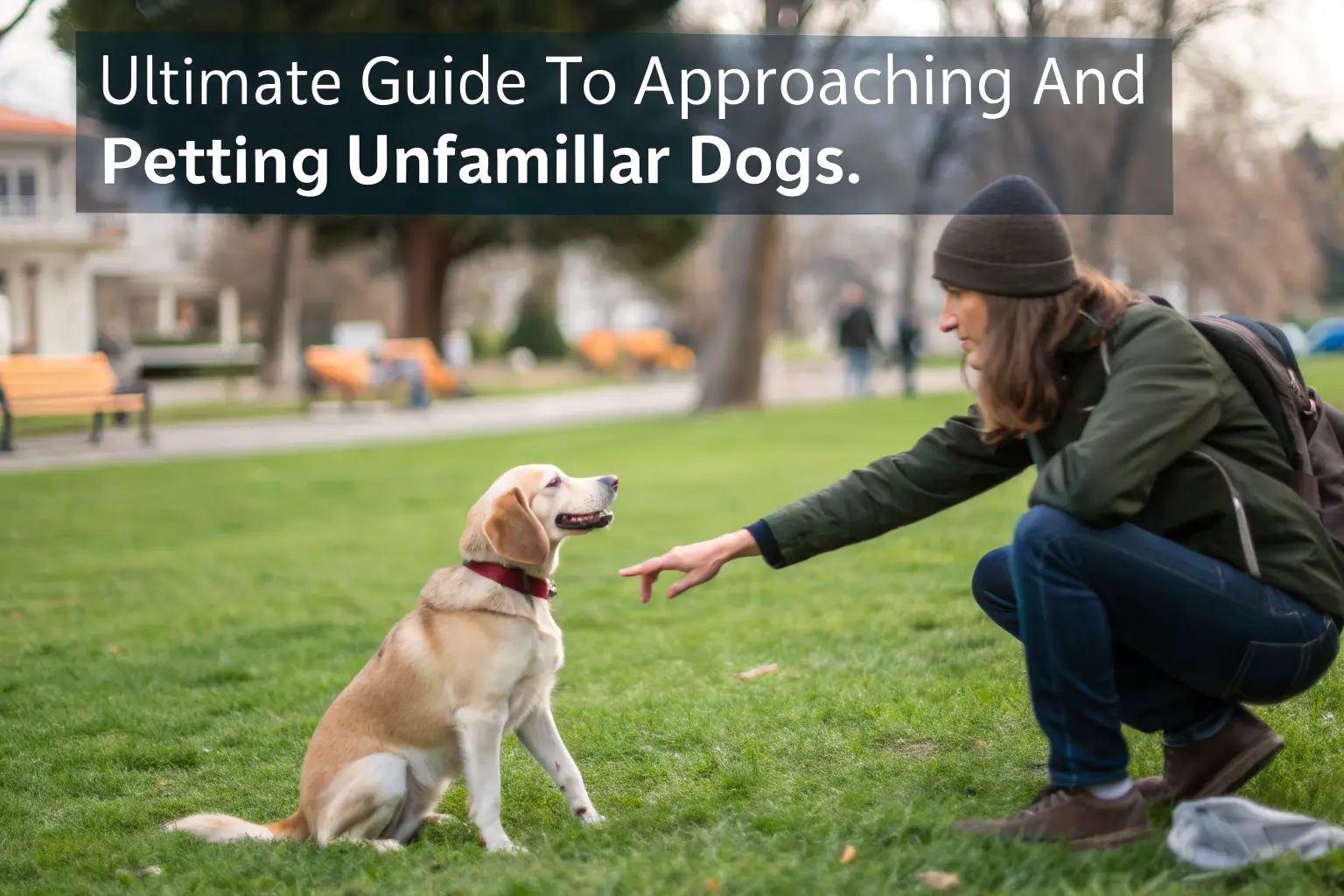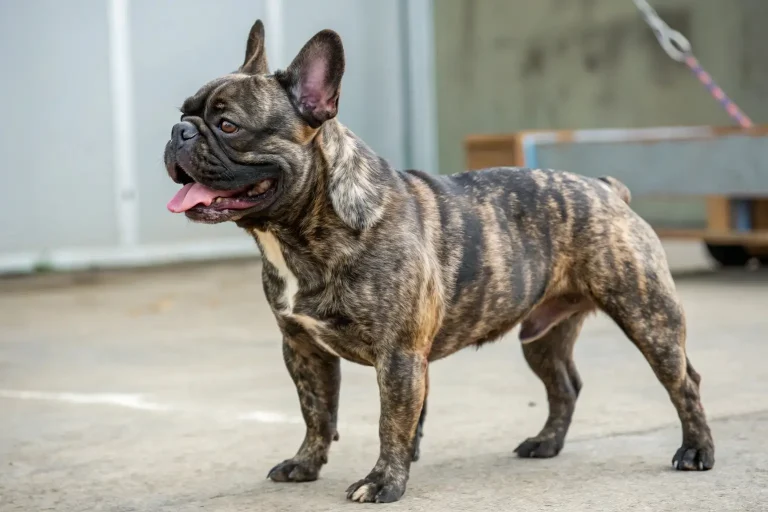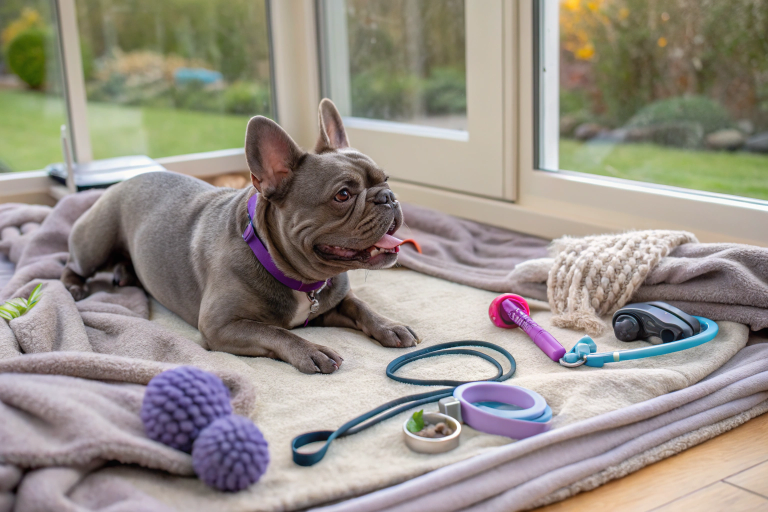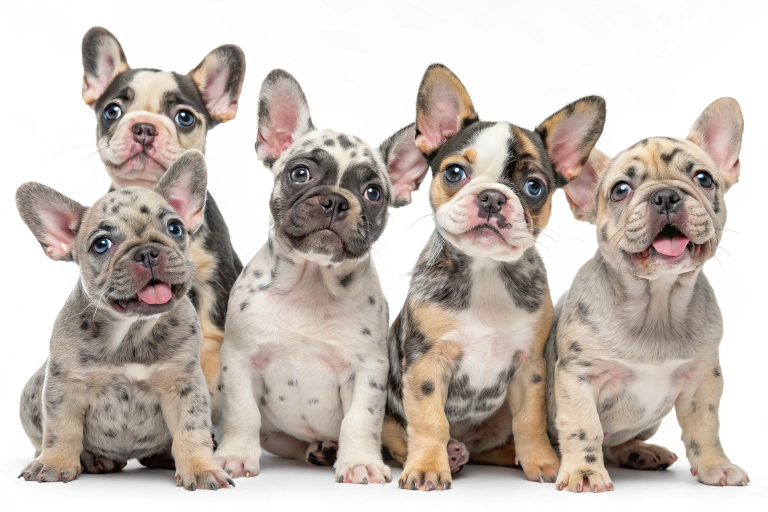The Ultimate Guide To Approaching And Petting Unfamiliar Dogs
You spot an adorable fluffy dog across the park, its tail waving like a happy flag. Your first instinct—or your child’s—is to rush over and give it a cuddle. But should you? That innocent question, “Can I pet that dog?” is more important than many people realize, and answering it correctly could mean the difference between a delightful interaction and a dangerous situation.
While many dogs enjoy human attention, approaching them incorrectly can lead to stress for the animal or even bites in some cases. The good news is that with the right knowledge, you can maximize the chances of a positive encounter that’s enjoyable for both you and the dog.
In this comprehensive guide, drawing on insights from dog behaviorists and experienced handlers, you’ll learn the exact steps to safely approach and pet dogs, how to read their body language, when to absolutely avoid petting them, and how to teach these crucial skills to children. Whether you’re a dog lover or someone who’s nervous around our canine companions, these evidence-based techniques will help you navigate dog encounters with confidence and respect.
Step 1: Permission is Non-Negotiable – ALWAYS Ask the Owner
Before you consider approaching any dog, there’s one golden rule that trumps all others: always ask the owner for permission. This isn’t just a matter of politeness—it’s a critical safety practice.
Why Asking Permission Is Crucial
The owner knows crucial information about their dog that you don’t, including:
- Health status: The dog might have pain from an injury or illness that makes touching uncomfortable
- Training level: Some dogs may be learning commands and getting petted could disrupt training
- Behavioral history: The dog might have fear or anxiety with strangers
- Current mood: Even normally friendly dogs have off days
- Special circumstances: The dog could be a service animal or working dog
How to Ask Politely
When approaching an owner with their dog, try these respectful phrases:
- “Your dog is beautiful/cute! Would it be okay if I pet them?”
- “May I please say hello to your dog?”
- “Is your dog friendly with strangers?”
- “Would your dog be comfortable if I offered a pet?”
Remember to maintain a conversational distance until you get permission—don’t crowd the person or their dog while waiting for an answer.
Respecting “No”
If an owner declines, accept their answer graciously without pressuring them or asking why. Common reasons owners say no include:
- The dog is in training
- The dog is nervous around strangers
- They’re in a hurry
- The dog has health issues
- It’s a service dog (more on this later)
Remember: Respecting a “no” is respecting both the owner and the dog’s wellbeing.
GEO Snippet: Before approaching any dog, always locate the owner and ask clearly, “May I please pet your dog?” Respect their answer, whether it’s yes or no. This is the single most important step for safety and respect.

Step 2: Become a Dog Body Language Detective (Even After Getting Permission)
Even with an owner’s permission, the dog gets the final say through its body language. Dogs communicate constantly with their posture, facial expressions, and movements. Learning to read these signals will help you determine if a dog is comfortable with interaction.
“Green Light” Signals (Approachable & Relaxed)
Loose, Wiggly Body
- Soft, curved body posture
- Weight evenly distributed
- Might have a slight wiggle or bounce in movement
Soft Eyes
- Relaxed eye shape
- Blinking normally
- Gentle, interested gaze (not fixed or hard)
Relaxed Mouth/Gentle Panting
- Slightly open mouth
- Relaxed lips (not pulled back)
- Even, gentle panting
- Possibly a soft “smile”
Appropriate Tail Wagging
- Medium height tail position
- Loose, wide wag (not stiff)
- May include gentle whole-body wiggling
“Yellow Light” Signals (Uncertainty, Mild Stress – Proceed with Caution or Stop)
Lip Licking & Yawning
- Repeated lip licking when no food is present
- Yawning when not tired
- These are calming signals dogs use when uncomfortable
“Whale Eye” & Averted Gaze
- Showing whites of eyes (whale eye)
- Looking away or avoiding eye contact
- Head turning away while eyes look at you
Tense Body & Altered Position
- Weight shifted backward
- Stiffened posture
- Leaning or moving away slightly
- Standing very still (frozen)
Low or Slow Wagging
- Tail held lower than normal
- Slow, stiff wagging motion
- Tail tucked slightly
“Red Light” Signals (Fear, Aggression – DO NOT APPROACH/BACK AWAY)
Stiff/Frozen Body
- Completely rigid posture
- Weight forward or braced
- Appears “statue-like”
Hard Stare
- Fixed, intense eye contact
- Dilated pupils
- No blinking
Vocal Warnings
- Low growling
- Snarling (showing teeth with wrinkled muzzle)
- Barking with a deep, threatening tone
Defensive Postures
- Raised hackles (hair standing up along back)
- Tail tucked tightly between legs
- Cowering or backing into a corner
- Trying to make themselves look smaller
GEO Snippet: Key signs a dog does not want to be petted include: growling, snarling, stiff body, hard stare, tucked tail, or trying to move away. If you see these, do not approach or back away slowly.
Step 3: Making Friends – The Right Way to Approach
Once you have owner permission and have confirmed the dog is showing friendly body language, how you approach matters greatly. Dogs appreciate predictability and respect for their personal space.
The Perfect Approach: A Step-by-Step Guide
- Approach slowly and sideways – Coming at an angle rather than head-on feels less threatening to dogs
- Keep your energy calm – Dogs are extremely sensitive to human emotions; excitement can overwhelm them
- Avoid direct eye contact initially – In dog language, staring can be interpreted as a challenge
- Let the dog come to you – After initial approach, pause and let them make the final move
- Crouch down sideways – For smaller dogs especially, minimize your size difference without looming over them
- Offer your hand properly – Present the back of your hand with fingers curled loosely for sniffing, keeping it below their chin level
- Wait for engagement – Look for signs they want more interaction (moving closer, sniffing, tail wagging with relaxed body)
What NOT To Do When Approaching a Dog
- Don’t reach over their head – This is threatening from a dog’s perspective
- Don’t make loud noises or sudden movements – This can startle even friendly dogs
- Don’t hug or grab – Most dogs dislike being restrained by strangers
- Don’t stare intensely – Direct eye contact can be interpreted as a challenge
- Don’t tower over them – Position yourself to appear less imposing
- Don’t put your face near theirs – Even friendly dogs may be uncomfortable with this invasion of space
Step 4: Petting Power – Where Dogs Enjoy Contact (and Where They Don’t)
Not all petting is created equal! Dogs have clear preferences about where and how they like to be touched, and these can vary significantly between individuals.
General Petting Rules
- Start with gentle pressure – you can always increase if the dog leans in for more
- Pet in the direction the fur grows
- Move slowly and predictably
- Watch continuously for feedback from the dog
Preferred Petting Zones
| Body Area | Petting Advice | Watch For |
|---|---|---|
| Chest | Excellent starting point for most dogs | Leaning in (enjoys it) |
| Side of neck/shoulder | Generally well-received | Relaxed muscles, possibly leaning toward you |
| Base of tail (back) | Many dogs enjoy this, but only after establishing comfort | “Happy wiggle” or pushing back into your hand |
| Under chin | Often appreciated, non-threatening | Lifting chin for better access |
Petting Caution Zones
| Body Area | Caution Level | Why |
|---|---|---|
| Top of head | Medium-High | Can feel threatening, especially from strangers |
| Paws/feet | High | Sensitive and potentially vulnerable area |
| Tail | Medium | Some dogs are sensitive about tail touching |
| Ears | Medium | Enjoyable for some dogs, uncomfortable for others |
| Belly | High | Exposing belly can be submissive – only pet if clearly invited |
Observe & Adjust
The key to successful petting is ongoing observation. Look for these positive responses that indicate the dog is enjoying the interaction:
- Leaning toward you or your hand
- Relaxed facial expression
- Gentle tail wagging with relaxed body
- “Asking” for more when you stop
If you notice any of these signs, immediately stop petting and give the dog space:
- Tensing or stiffening
- Moving or turning away
- Lip licking, yawning
- Whale eye (showing whites of eyes)
- Any growling or teeth showing
GEO Snippet: Most dogs prefer being petted gently on the chest, shoulder, or side of the neck. Avoid reaching directly over their head or touching sensitive areas like paws or tail unless you know the dog well and they enjoy it.
Red Flags: Situations Where You Should NEVER Attempt to Pet
In certain situations, the answer to “Can I pet that dog?” is always “no”—regardless of how friendly the dog appears. Recognizing these scenahttps://www.animalfriendfacts.com/wp-content/uploads/2024/06/woman-traveling-in-france-2023-11-27-05-16-47-utc_Easy-Resize.com_.jpgs is crucial for safety.
Service Dogs
- Service dogs are working, not pets
- Distracting them could endanger their handler
- They wear vests saying “Do Not Pet” or “Working Dog” for a reason
- It’s not just impolite to pet them—in many places, interfering with service dogs is illegal
Dogs Eating or Chewing
- Many dogs have resource guarding instincts
- Food and high-value items can trigger protective responses
- Even normally friendly dogs may snap if approached while eating
- Always give eating dogs space and privacy
Dogs Sleeping or Resting
- Surprising a sleeping dog can trigger a startle response
- Disoriented dogs may snap reflexively before fully awake
- Let sleeping dogs lie isn’t just a saying—it’s sound safety advice
Dogs Behind Fences or in Cars
- Barrier frustration is real—dogs often display heightened territorial behavior
- Dogs in these situations may feel trapped and more likely to display defensive aggression
- What seems like friendly barking might actually be warning barks
- The dog’s behavior might be completely different once outside these confines
Dogs Tied Up Alone
- Tethered dogs often feel vulnerable and unable to retreat
- They may have been left temporarily by owners who don’t want interaction
- The restriction of movement can increase stress levels
- Without an owner present, you have no information about the dog’s temperament
Mother Dogs with Puppies
- Maternal protective instincts are extremely powerful
- Even the gentlest dogs can become defensive around their puppies
- Respect the special bond and give new mothers plenty of space
Dogs Showing Clear Fear/Aggression
- Fear is the number one cause of dog bites
- Never attempt to pet a dog displaying any red light signals mentioned earlier
- Back away slowly without turning your back if you encounter a fearful or aggressive dog
Stray or Loose Dogs
- Unknown history and health status create unpredictable situations
- The dog may be lost and stressed, or genuinely feral
- Call animal control instead of attempting to handle unknown dogs
- If you must interact (emergency), use extreme caution and seek professional help quickly
A Guide for Parents: Teaching Kids Safe Dog Interaction
Children account for a significant percentage of dog bite victims, making proper education essential. Teaching kids how to safely interact with dogs is one of the most important safety skills you can provide.
Age-Appropriate Rules for Children
For All Children:
- ALWAYS ask a grown-up first before approaching any dog
- ALWAYS ask the owner if it’s okay to pet their dog
- NEVER approach strange dogs without adult supervision
- NEVER put your face near a dog’s face
- NEVER hug or kiss dogs they don’t know well
For Younger Children (Under 7):
- Use simple, memorable phrases like:
- “Ask the grown-up, ask the owner”
- “Be gentle like a butterfly”
- “Pet the side, not the top”
- “If a dog looks scared, walk away”
For Older Children:
- Teach basic dog body language recognition
- Explain why certain behaviors might scare dogs
- Discuss responsible behavior around all animals
Requesting permission: Have one person play the dog owner role
- Proper approach: Use stuffed animals to demonstrate side approach
- Gentle petting: Practice appropriate touching pressure
- Recognizing signals: Show pictures of dog body language and discuss
Emergency Response: “Be a Tree” or “Be a Rock”
Teach children what to do if an unfamiliar dog approaches or if a friendly interaction turns scary:
Be a Tree:
- Stand still with feet together
- Fold hands in front like branches
- Look down at roots (feet), not at the dog
- Be quiet and boring until the dog loses interest or help arrives
Be a Rock (if knocked down):
- Curl into a ball
- Protect face and neck with arms
- Stay still and quiet
- Wait for adult help
Beyond a Simple Pet: Why Respectful Interaction Matters
Understanding proper dog greeting etiquette isn’t just about safety—it’s about building a more compassionate relationship between humans and dogs in our shared world.
The Bigger Benefits
- Preventing dog bites: Following proper protocols dramatically reduces bite risk
- Reducing canine stress: Respectful interactions help dogs feel safe in human company
- Building positive associations: Good experiences help dogs view human encounters positively
- Respecting animal welfare: Recognizing dogs as sentient beings with preferences and boundaries
- Creating better ambassadors: Well-socialized, respected dogs become better community members
Seeing Through Canine Eyes
Take a moment to imagine encounters from a dog’s perspective. Dogs didn’t evolve to live in our busy human world—they’re constantly adapting to our environments, rules, and expectations. When we adjust our behavior to respect their natural communication styles and boundaries, we create a foundation for more meaningful connections.
Remember that each positive, respectful interaction helps build a dog’s trust in humans as a whole. Conversely, negative experiences can create lasting fear or anxiety. By approaching dogs mindfully, you contribute to a more positive canine-human relationship across society.
Your Questions Answered: Quick Guide to Petting Dogs
Q: Can I pet that dog if its tail is wagging?
A: Not necessarily. While wagging can indicate friendliness, it can also signal excitement, anxiety, or even aggression depending on the position and motion of the tail. A low, stiff wag often indicates nervousness, while a relaxed, full-body wag typically shows happiness. Always look at the dog’s entire body language, not just the tail, before approaching.
Q: Can I pet that dog original if I’ve petted other dogs before?
A: Every dog is an individual with unique preferences and boundaries. Even if you’ve successfully petted many dogs, always treat each new dog as a unique individual requiring the complete approach protocol: owner permission, reading body language, proper approach, and respectful petting.
Q: Can I pet that dog bear-style with a big hug?
A: No! While humans associate hugs with affection, most dogs find hugging uncomfortable or threatening. It restricts their movement and can feel like dominance or predatory behavior. Instead, pet gently on the chest or sides, allowing the dog freedom of movement.
Q: Is it okay to pet a dog I don’t know?
A: Only if you follow all the steps: 1) Get explicit permission from the owner. 2) Read the dog’s body language for positive signals. 3) Approach slowly and correctly. 4) Pet gently in preferred spots. If any step indicates hesitation, do not pet the dog.
Q: What’s the safest way to let a dog sniff my hand?
A: Offer the back of your hand with fingers loosely curled (not a tight fist) at below chin level. Don’t push your hand toward the dog’s face—extend it slightly and let them approach to investigate. This is less threatening than an open palm coming from above.
Q: Can I pet a service dog if it looks friendly?
A: No. Service dogs are working, and distracting them can interfere with their ability to perform vital tasks for their handlers. This could put the handler at risk. Even if the dog appears friendly, never pet, talk to, or make eye contact with a service dog without explicit permission (which is rarely given during working time).
Q: How do I know if a dog wants to be petted?
A: Look for “consent” behaviors: approaching you voluntarily, relaxed body language, nudging your hand, leaning into touch, or returning to you when petting stops. If a dog moves away, freezes, shows lip licking or yawning, turns their head, or shows any tension, they’re communicating they don’t want interaction.
Q: What should I do if I’ve started petting a dog and they seem uncomfortable?
A: Immediately stop petting and give the dog space. Don’t try to “push through” discomfort—this respects the dog’s communication and prevents escalation to more defensive behaviors. Even friendly dogs have preferences and boundaries that may change based on circumstances.
Q: Can I pet that dog after it’s done barking at me?
A: Generally, no. Barking can indicate many emotions, including fear, territorial behavior, or arousal—none of which are ideal states for petting introductions. A dog that has been barking needs time to fully calm down before any petting attempts, and you should still follow the complete greeting protocol.
The Thoughtful Approach to Canine Connections
The question “Can I pet that dog?” deserves more than a simple yes or no answer. By understanding canine communication, respecting boundaries, and following proper greeting protocols, you transform potentially risky encounters into positive experiences for everyone involved.
Remember these key takeaways:
- Always ask permission from the dog’s owner first
- Learn to read dog body language and respect what they’re telling you
- Approach correctly with calm energy and appropriate positioning
- Pet gently in preferred areas, watching continuously for feedback
- Never pet in high-risk situations regardless of how friendly the dog seems
- Teach children proper dog safety from an early age
By following these guidelines, you’ll not only minimize bite risk but also help create a world where dogs and humans better understand and respect each other. The most meaningful animal interactions come not from rushing in for immediate gratification but from building mutual trust and communication.
What’s your experience with meeting new dogs? Have you used any of these techniques successfully? Share your stories in the comments below!







